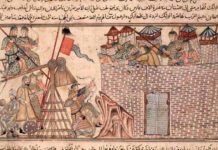Direct and indirect rule is a significant concept in Southeast Asian colonial history. It refers to the method of rule that colonial powers practiced on the Southeast Asian nations which they ruled.
Definitions and Examples of Direct and Indirect Rule
‘Direct’ rule means relying on colonial administrators to run the colony, with little reliance on the locals, such as in the case of Burma since their annexation in 1886.
Upon Burma’s annexation by the British, many of its political systems were abolished, such as the Ava Court and the Hlutdaw. Instead, the British imposed their own form of rule on Burma, which was patterned after the Indian model. Burma was divided into districts, each with an assistant commissioner and police assistant, for the sake of administrative efficiency. Moreover, they got rid of the traditional Burmese circle system and enforced the Indian village pattern, which because it required fewer village headmen, and was hence easier to administrate. From top to bottom, Burmese rule was profoundly altered.
Inversely, ‘indirect’ rule describes colonial rule that utilizes pre-existing political systems, like in Malaya, which was not changed and ruled in the way Burma was.
When the British colonized Malaya, the sultanate was allowed to be preserved, though a framework of bureaucratic changes were added. In the case of Western Malaya, Malay rulers were still allowed to rule, however, under the guidance of a British resident, who could touch on all matters except those relating to religion and custom. Instead of Burma where they were completely abolished, the traditional icon of rule, the sultans, were preserved, and hence Malaya could maintain some form of national pride, despite they having little real political power.
Harshness and Tone of Rule
Although there is the implication that a colonial power practicing direct rule would rule more harshly than one practicing indirect rule, this is not entirely true, as the tone that rule takes is more important than the actual form, which is merely an administrative structure.
In the colonization of the East Indies, the Dutch, being mainly interested in the spice trade, worked out a form of rule which was best suited to marketing spices in Europe. They controlled islands like Java and Sumatra indirectly, ruling through the priyayi, which were the elite class. They borrowed the fear and respect the natives already had for them, while stripping them of most of their political influence. Although they only tweaked the existing system slightly, it was fairly self serving, nearly harsh, as they put economic gain first and then ignored other needs of the locals.
In direct contrast, the American rule of The Philippines, while considered direct rule, was actually much more liberal, given the perception of leaders such as President McKinly that it was the United States’s duty to civilize the Filipinos and eventually grant independence. They structured Filipino society along American lines, by implementing democratic institutions and processes, decentralizing power to created municipal and provincial governments were created, The introduction of bicaramel legislature accompanied with the allowance that Filipinos could be elected was another example how Americans introduced a rule that was markedly different from what existed, yet was considerably more benign than that practiced by the Dutch.
Evolving Nature of Direct and Indirect Rule Over Time
Besides just the extent of political transformation and the strictness of ruling, it is also important to see that the time factor should also be taken into consideration.
For example, although once annexed, the British had kept a strict hold on the Burmese, later on, in 1897 when the legislative council was established, more and more Burmese members were added, which shows how the British hold on Burma gradually recedes to a less direct and controlling one, to a more indirect rule. This continued till by 1935, the British finally released Buram from the Indian model of administration due to nationalist efforts, and implemented a bicameral Burmese parliament. As such, it follows that from the period of time Burma was annexed till circa 1935, the political trends showed a gradual receding of the extent of direct rule.
Significance of Direct and Indirect Rule
The concept of direct and indirect rule helps in understanding and appreciating how Southeast Asia was like during colonial times. Interestingly, it applies differently to various nations (or more appropriately, territories, as the idea of a nation-state was not inherent in Southeast Asia culture, but came with nationalism which happened after colonial rule), and its influence changes over time.
It is one among many other perspectives which reveals the complexity in Southeast Asia, a region which requires classification by similarities and differences to understand it, even as conditions and events seem to resist such classification.
Bibliography:
- Southeast Asia (Oxford History of the 20th century) by Michael Leifer (Published 1998)
- Nicholas Tarling, The Cambridge History of SEA Volume 2 Part 1 by Nicholas Tarling (Published 1999)
- Nations and States in South-East-Asia by Nicholas Tarling (Published 1998)








